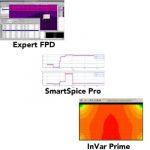You are currently viewing SemiWiki as a guest which gives you limited access to the site. To view blog comments and experience other SemiWiki features you must be a registered member. Registration is fast, simple, and absolutely free so please,
join our community today!
This area of automating the design of Flat Panel Displays (FPD) is so broad that it has taken me three blogs to cover all of the details, so in brief review the first two blogs were:
My final blog covers five areas:
- DRC/LVS for curvilinear layout
- Circuit
…
Read More
You are likely reading this blog using a Flat Panel Display (FPD), because they are so ubiquitous in our desktop, tablet and smart phone devices. Today I’m following up from a previous article. A quick recap of the unique design flow for FPD is shown below:
What follows is the second part of a Q&A discussion with Chen Zhao… Read More
I’ve used OLED (Organic Light-Emitting Diode) displays for many years in my monitors, laptops, tablets, e-readers and smart phones; and knew that the AMOLED (Active-Matrix OLED) displays used thin-film transistor technology where each pixel can be controlled, but I hadn’t considered the actual design process… Read More
I knew that the acronym for TFT meant Thin Film Transistors, but I hadn’t heard that FPD stands for Flat Panel Detectors. It turns out the FPD are solid-state sensors used in x-ray applications, similar in operation to image sensors for digital photography and video. I’ll be attending and blogging about what I learn… Read More





